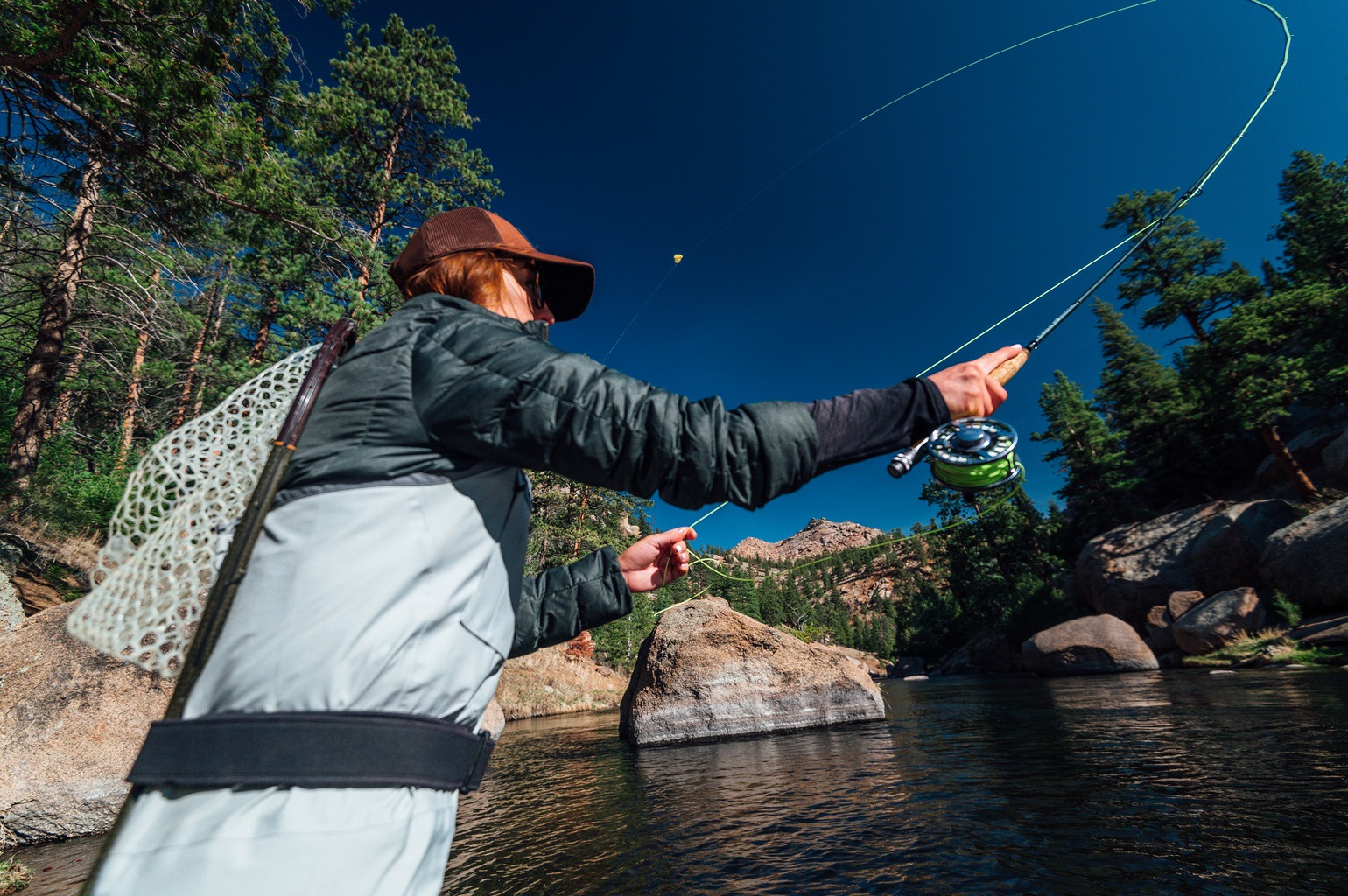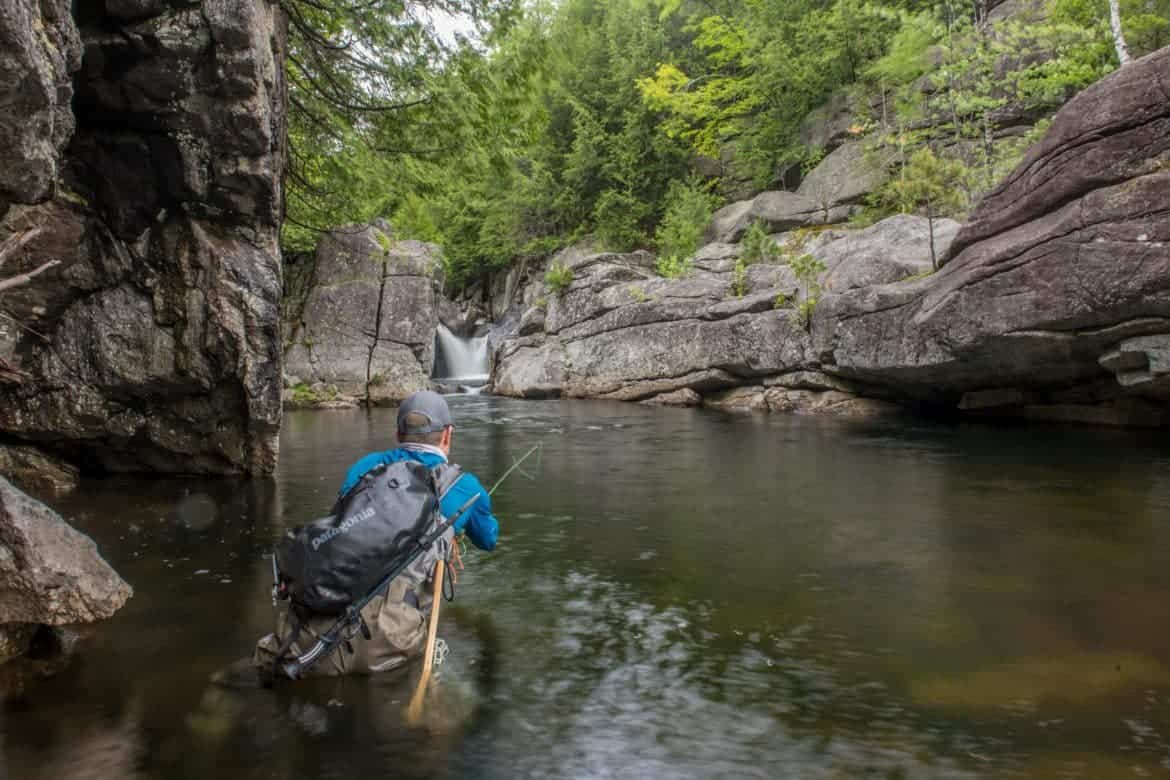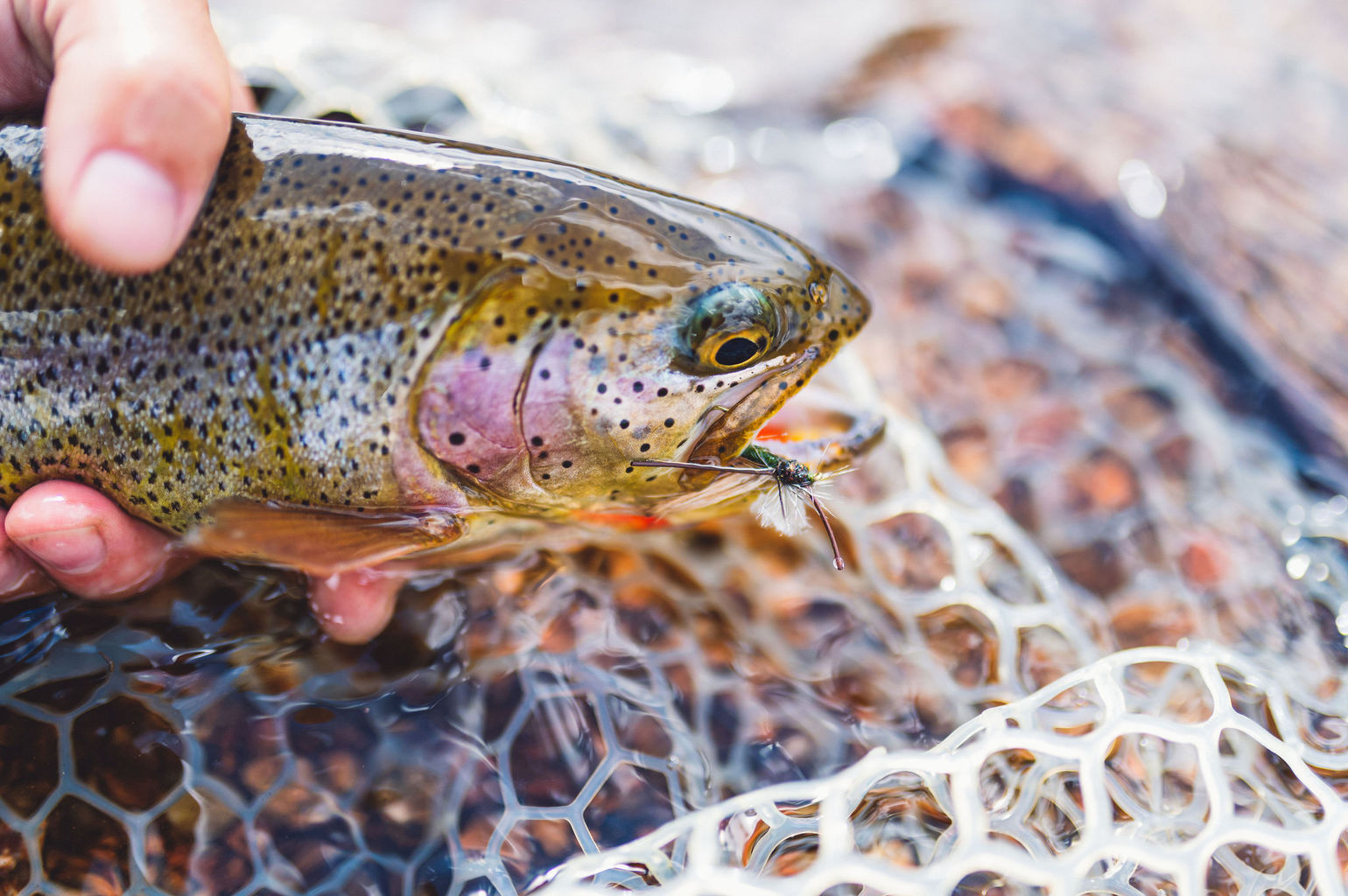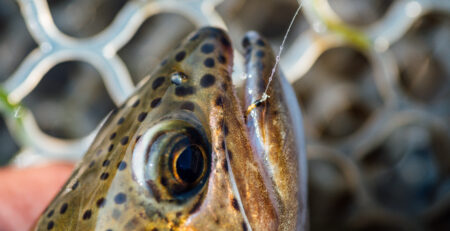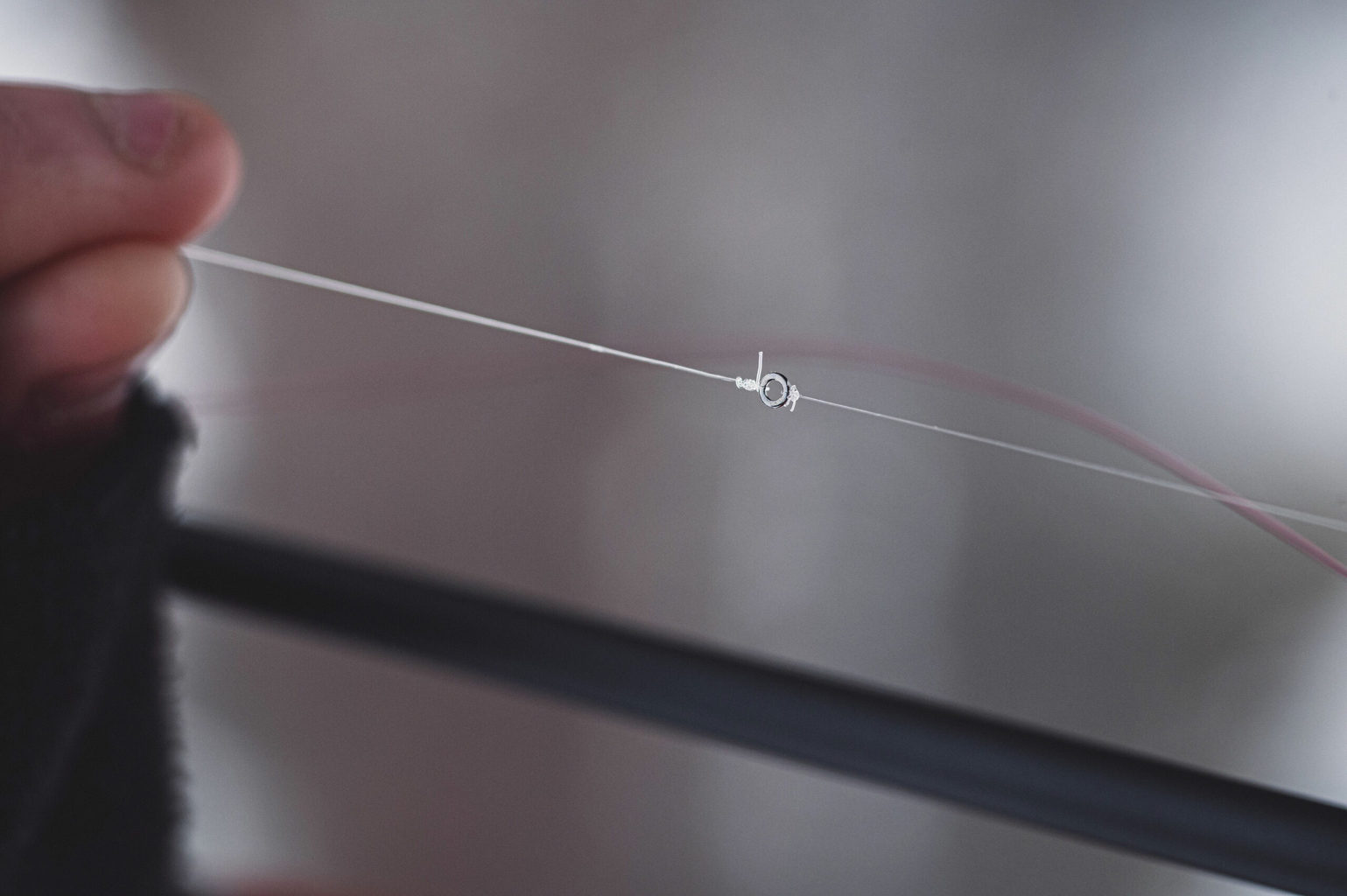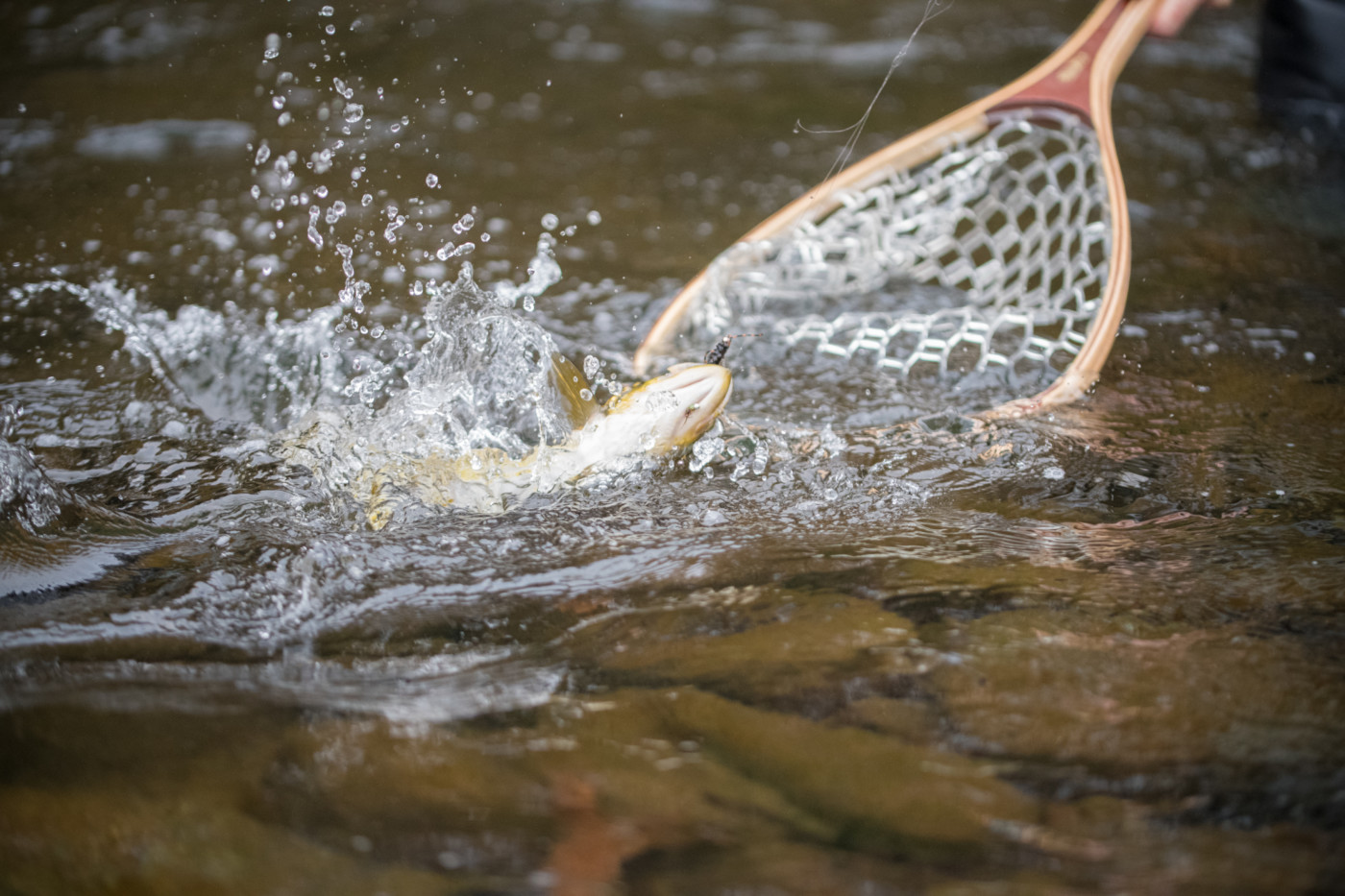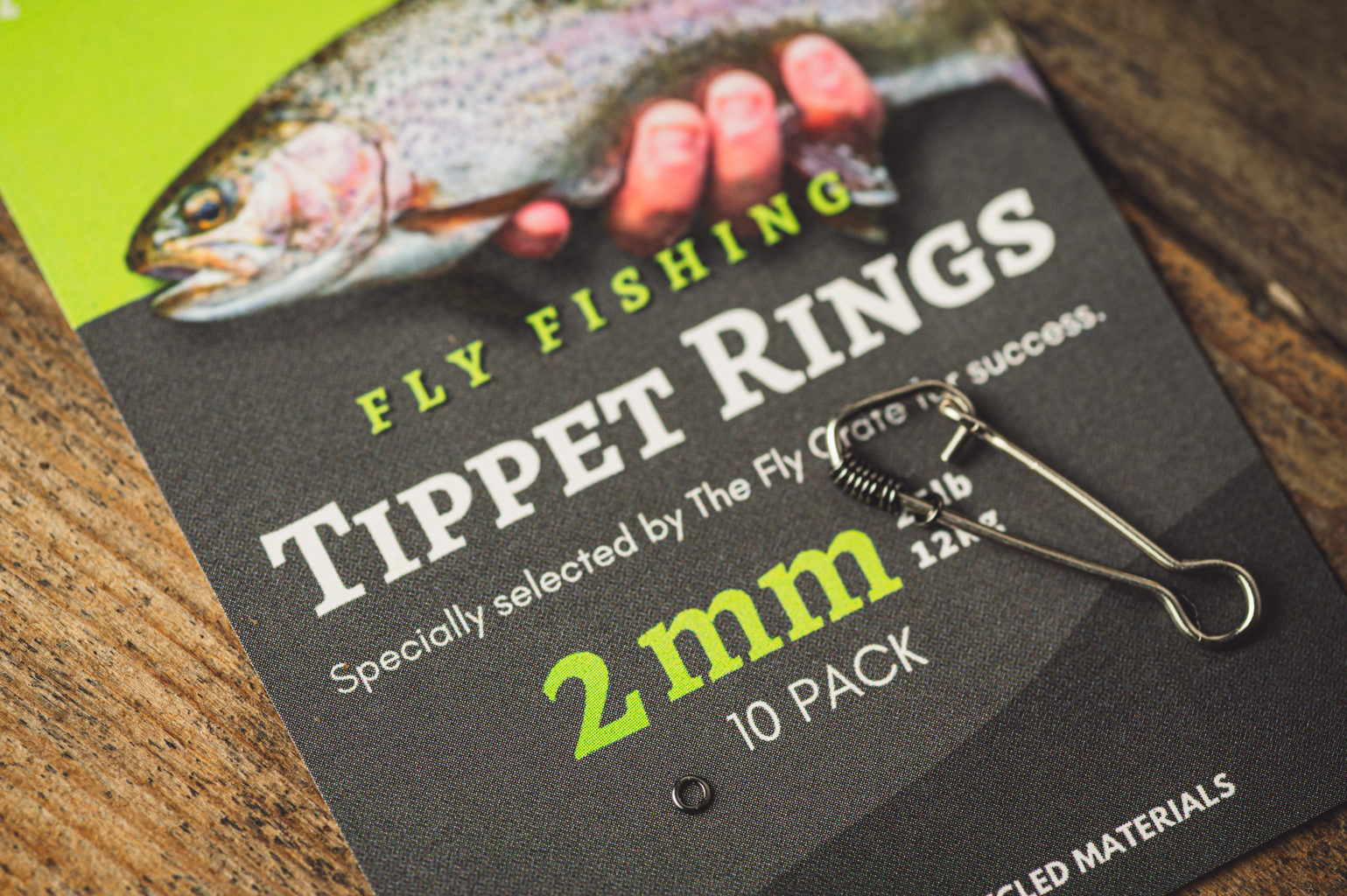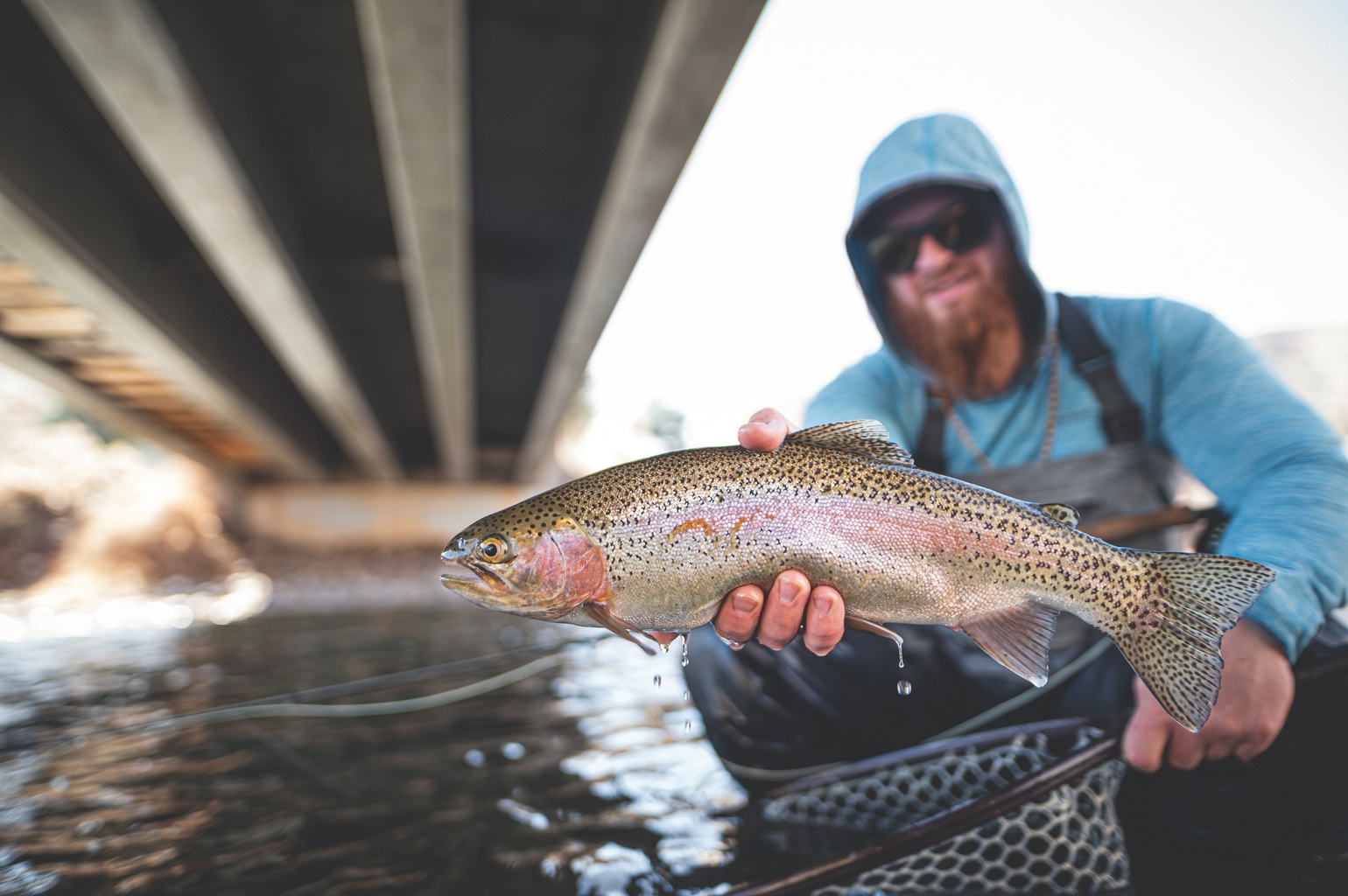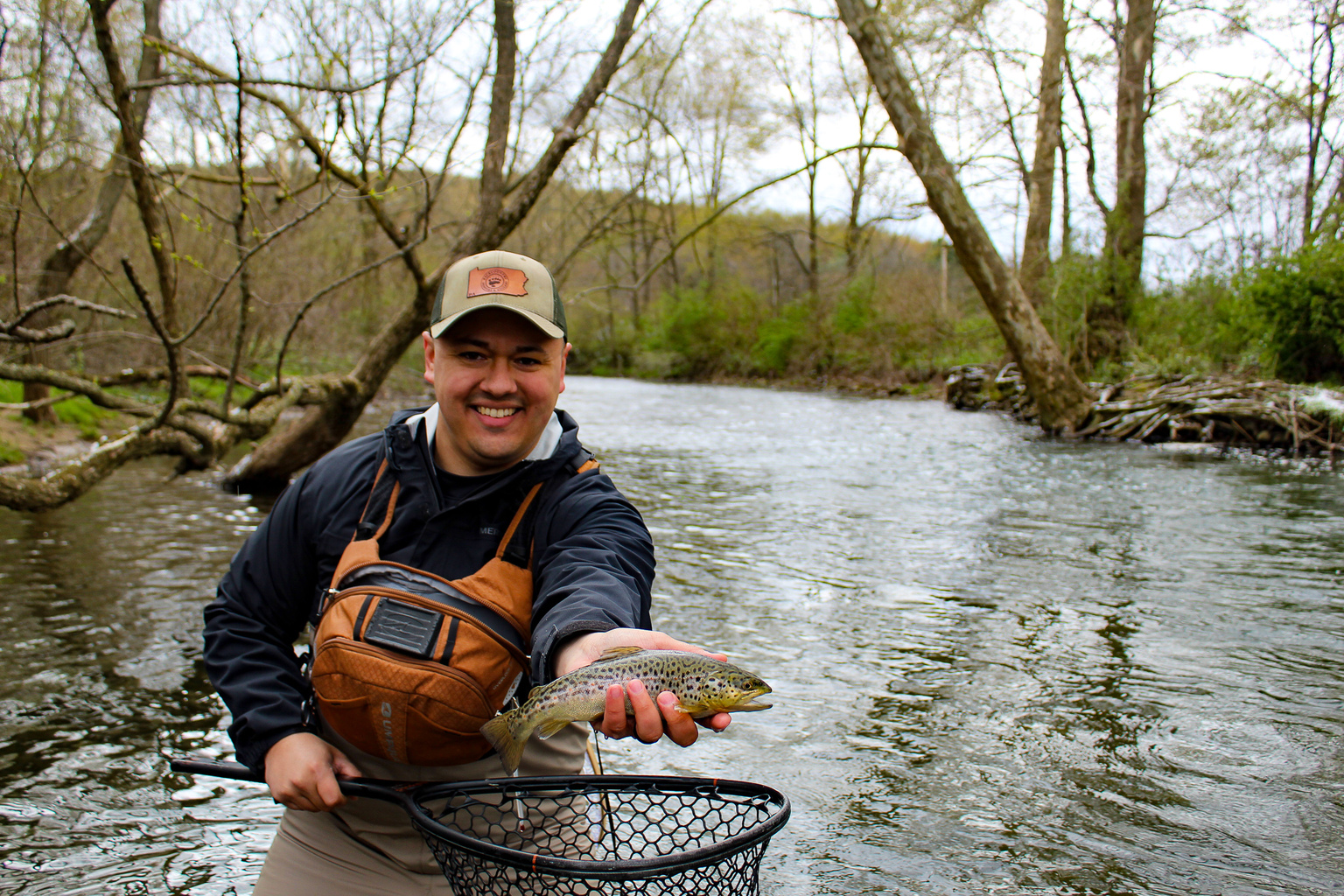Dry Fly Fishing: Everything You Need To Know About Dry Flies
While there are many different ways to catch fish, catching fish on a dry fly is considered by many to be the pinnacle of the sport of fly fishing. Dry fly fishing is when anglers fish flies that float on the surface of the water. As aquatic insects progress through their lifecycles, eventually they reach the surface of the water and for a brief period of time, they are vulnerable to feeding fish. It is at this moment that fly fishermen, are presented with the opportunity to fish surface flies to receptive fish.
Understanding dry fly fishing techniques is important because fly anglers can capitalize on dry fly fishing opportunities. Situational awareness: where, when, how, and why to fish dry flies will allow fly anglers to take advantage of every fly fishing opportunity presented to them. This results in more fish caught, exciting surface eats, and a greater understanding of the rivers that you fish.
It is entirely possible that I could write a whole book on the topic of dry fly fishing. We won’t do that here, as we neither have the time nor space to do so. Others have already done it. My hope is to demystify dry fly fishing. I want to give readers a big-picture understanding of the art of dry fly fishing, and some useful tips, techniques, and suggestions that will help you get started on the journey.
Table of contents

Difference Between A Dry Fly And A Nymph
What is a dry fly? There are many different styles of dry flies, but essentially, dry flies are fly fishing flies that are tied to float on the surface of the water. They can ride high on the water’s surface or they can be tied to float in the film of the water’s surface, precariously hanging in the meniscus of the water.
They are tied with many different types of fly tying material. Generally, they are tied with hackle, CDC, foam, or deer hair. All of these materials serve different purposes, but they are tied out of buoyant material that allows the flies to float.
Dry flies are tied to represent different insect hatches: caddis flies, mayflies, stoneflies, midges, terrestrial insects, and even mice. All of these forage items can be tied as dry flies and utilized to catch fish while trout fishing.
Dry flies are profoundly different then nymph flies. Nymph flies are flies that fished under the surface of the water. A Nymph, or wet fly, is sometimes tied with weight or has a small bead head made out of lead or tungsten that allows the fly to sink deeper in the water column. Nymph fishing is done subsurface, dry fishing is done on the surface of the river or lake.

Wet and Dry Flies, When Should You Use Them?
Every fly has its time and place, and choosing the right fly is important for fly fishing success. This is often referred to as matching the hatch. As we mentioned before, aquatic insects go through a hatching process. Caddis flies, mayflies, stoneflies, and midge lifecycles are all different, each one offering unique opportunities to catch fish on a dry fly. I am not going to go into each insect life cycle here, but you need to understand the basic concept of how these insects find their way from the bottom of the river to river’s surface.
Essentially, insect hatches are driven by environmental factors, but mainly by light and temperature. The warmer the water temperature the faster the lifecycle occurs. Aquatic insects live mostly under the rocks of the river, burrow into the mud of the river bottom, or cling to debris or dead plant material at the bottom of the river.
Some insects, such as caddis flies, build protective cases out of small rocks or plant material, spin nets, or are free living, while mayflies and stoneflies are free living and cling to the bottom of rocks or burrow into mud. These insects spend the majority of their lives here, and they are often times not accessible to fish as a forage item. Occasionally, they will be knocked free from beneath the rocks and will drift naturally in the water where they can be eaten by fish. Although this is rather a rare occurrence, they are mostly protected beneath the rocks.
Recommended Reading: Different Types of Fly Fishing Flies And How to Use Them

When water temperatures reach the right temperature, aquatic insects hatch. This hatching process is different for each insect, but essentially, they leave the safety of the bottom of the river and start their journey to the surface of the water or to the stream side banks.
Mayflies, caddisflies, and midges will swim or float their way to the surface of the water. Once they make contact with the meniscus, the surface tension of the water, they struggle to break through it. This is our first opportunity to present a dry fly. Many insects don’t make it through the meniscus. They are eaten by fish, drown, or simply get trapped there.
Those that make it through to the surface of the water must wait, often for long periods of time to develop their wings and dry before they can take flight. This portion of the insect’s life cycle leaves them vulnerable to predation and gives fish ample opportunity to eat insects. For dry fly anglers, this is our second opportunity to present a dry fly to fish.
Once they leave the surface of the water they will form mating clouds or find other mates in the streamside bushes where they mate. Egg sacks develop and at some point, they will return to the surface of the river, deposit their eggs, and die. This is the final opportunity for the fly angler to present a dry fly.
Stoneflies are different then caddis flies or mayflies. Instead of swimming to the water’s surface, they will crawl along the bottom of the river until they reach the banks. This mass migration is the first opportunity for fish to eat these large high-calorie meals. Fish will move and follow them to the banks. Once they reach the banks, they crawl out of the river, develop their wings, find a mate, and then the female returns to the river to deposit her eggs.
It is important to understand that when these insects leave the safety of the river’s substrate, they hit the water current. Whether they are on the surface of the river or underneath it, they are moving at the same speed as the water current. This means that we must also present our flies in the same manner, drag free and with a natural drift.
Being a student of the water and observing which insects are present is critical to being successful at catching fish. Not only does keen observation enhance the fly fishing experience, it also determines when, where, and if you should fish a nymph or dry fly.
Recommended Reading: What are the Best Casts for Dry Fly Fishing

Dry Fly Fishing Essential Gear
Most of your standard trout fishing dry fly fishing can be done with a 4-6 weight 9-foot trout fly rod. There are a few things to consider when choosing gear. I will cover those points here.
Fly fishing fly rods come in a few different speeds. A fly rod with a fast rod tip means that the rod is stiffer than a rod with a medium or slow tip. A slow rod tip on a fly rod provides more flex. There are advantages to both.
When I dry fly fish on large open western rivers, I usually fly fish with a large foam dry fly. The conditions are windy, and many times fishing scenarios require tight cast close to cover along the bank. In situations like these, I prefer a heavier fly rod in 5-6 weights, with a weight forward floating fly line and shorter heavier leader in the 2-3x range. A fast action rod tip is helpful in these situations.
The heavier fly line and the fast action rod tip make casting heavier dry flies in windy conditions easier to present the flies with greater accuracy and more control. This one setup will work for more delicate presentations with some modifications, but a true dry fly purist will often carry lighter rods with a slower tip for presenting small dry flies in a delicate manner.
When fishing small spring creeks with slower water or even on bigger rivers with rising fish eating small mayflies on gravel bars, many anglers will carry a lighter fly rod with a weight forward floating fly line and a slow action rod tip. Fly rods in the 4-5 weight rod range, with a longer lighter leader (9 feet minimum in 4x-6x) are ideal for a delicate delivery of small dry flies to the water’s surface.
A slow action rod tip and longer leader sacrifice accuracy on the delivery, but it lays the flies and leaders down softly on the water. Experienced anglers know how important long leaders and a delicate presentation are when fishing for weary trout feeding on emergers or adult insects.
Another thing to consider when preparing for dry fly fishing for trout is your need for floatant. Floatant is critical for anglers to carry when dry fly fishing. You can buy this at your local fly shop, but it is very easy to make at home too. As a guide, I always tried to save money any way I can, so making my own floatant saves me quite a bit of money.
You will need some white gas and paraffin wax to create your fly floatant. White gas can be found at any outdoor store. It is the gas that you put in small stoves when you go camping. It is highly flammable, so be careful. Paraffin wax can be found at Walmart or any hobby store.
Take a kitchen grater, the finer the better, and grate the bar of wax down into fine shavings. Add the wax into a mason jar of white gas. The more wax you add, the more water-resistant your flies will be. Put the lid on the jar and shake it until the wax dissolves. This will make you more floatant than you can use in a lifetime.
For larger flies with synthetic or deer hair wings, white lighting bicycle grease is an excellent option for larger bugs. This is also much cheaper than what you would buy over the counter at a fly shop. One small tub of White Lighting grease will last years. Simply rub it on the wings and you are all set for most of the fishing day.
Recommended Reading: How to Catch Trout on Caddis Flies

Shake Dry or High N Dry is important too. Both of these items come into play when fishing small dry flies. Applying shake dry to your dry flies, helps them ride high on the waters surface. They also play a major role in fishing emerger dry patterns. We will cover this in more detail later.
Other items that should be considered are fluorocarbon tippets, nippers, and hemostats. When choosing tippet material, I like to carry fluorocarbon tippet in ranges from 3x-6x. The reason I choose fluorocarbon is because it sinks. Regular mono tippet lays on the water’s surface and creates dimples. Feeding trout that see lots of angling pressure, will often be spooked or refuse a fly drifting naturally because the tippet is a giveaway on the presentation. Fluorocarbon eliminates this problem with maximum stealth.
Choose a tippet that matches the size of your flies. The smaller the flies the lighter the tippet (4x-6x range for small flies sizes #16-#22). This is critical when fly fishing flies that are super small. Heavy tippets with small flies will not allow the flies to drift naturally on the water. In contrast, larger heavier dry flies need stronger tippet (1x-3x in weight) in order to turn the fly over on the cast and present the fly with accuracy.
Nippers are important. Anything will work here. I usually use fingernail clippers. Have them handy to trim tag ends and leader knots. Hemostats are a critical piece of gear too. Gently removing a hook from deep inside a fish with minimal handling is ethical and critical to fish survival.
Recommended Reading: What Size Fly Fishing Tippet and Leader Should You Be Using?

Can You Spot Rising Fish
Before you approach the river and start fishing dry flies, observe what is occurring around you. Examining streamside bushes and watching the surface of the water for rising fish will give you an advantage over other anglers prior to ever making your first cast.
As we mentioned earlier, aquatic insects will generally harbor in the streamside bushes to find a mate, wait for their egg sacks to develop, and then return to the water’s surface to lay eggs. Shaking the bushes and examining the insects that fall out of them is an excellent way to see what insects have already hatched or are currently hatching. This eliminates much of the guesswork when choosing what dry fly you should choose to fish. You don’t even need to know insect species. Match the size, shape, and color of the real insects with a dry fly pattern in your fly box.
Next, look to see if you see any rising fish. If not, then nymph fishing subsurface might be your best bet, or try an attractor dry fly. These are flies that just grab a fish’s attention.
If fish are rising, take a closer look at the rise form that the trout is creating. The rise form is the disturbance of the water that is created when a fish eats an insect that is either hatching or has hatched. The rise form is going to determine what type of dry fly to choose: an emerger hanging on the surface of the water’s film or a true dry fly that floats on top of the water.
There are two types of rise forms that are important in fly fishing. The first rise form is when a trout eats a fully formed aquatic insect that has made it through the meniscus and is riding high on the surface of the water. This type of eating is noted by seeing the entire fish’s head and open mouth eat an insect. In this scenario, choosing a true dry fly like a parachute adams or elk hair caddis is a good choice. These fish eat insects on the water surface.
In contrast, porpoising fish or fish with only their backs and dorsal fins breaking the water surface is a sign that fish are eating emergers. These trout are keyed into insects that are in or just under the surface of the water. In my experience, this happens much more often than true dry fly eats, as there is generally more food in the meniscus. Both cripples and emergers are easier for trout to eat.
Identifying rise forms when fishing dry flies is a critical step to choosing the right angling technique. Observe, take notes, and then choose the correct fly pattern.
Recommended Reading: How Do You Match Flies to the Hatch?

Presentation Techniques For Dry Fly Fishing
Once a fly angler has identified what fish are foraging on, we must approach carefully to present our flies so that either our presence or fly line doesn’t spook the fish. Approaching with stealth is critical.
Survival is a fish’s number one priority. There is no greater threat to a trout than birds of prey. While fish are not always looking up, they are very conscious of shadows. Keeping your shadow off the water and away from fish is the first thing to consider before making your first cast. Always note where the sun is in relation to where the trout is positioned and where you will be casting.
Fish will always be facing into the current. They can see to the side, above them, and out in front of their position. Experienced anglers will always approach fish from downstream and behind their target. This gives you the best chance to approach fish without spooking them. Also, consider the ground you are walking on. Most streams have undercut banks. These hollow sub aqua washouts will hold fish and they also magnify noise. Heavy footsteps and clumsily moving over these areas magnify noise and spook would be targeted trout.
Prior to choosing your position, the last point to consider is a drag-free drift. As we mentioned earlier, aquatic insects float at the same speed as everything else in the current. When dry fly fishing, we need our dry flies to do the same. We must predict and evaluate the currents in the present fly fishing scenario and ensure that the angling position we take will allow us to present the flies drag-free.
Recommended Reading: A Delicate Presentation Is The Best Presentation

For me, being a right-handed angler (holding the fly rod in my right hand), my ideal presentation is to be downstream and behind a rising fish. Ideally, I am quartered from the fish at a 45-degree angle with the water moving from right to left. This allows me to present my fly upstream, and make a reach cast on the initial presentation. A reach cast is when you make an aerial mend on your forward cast, allowing the line belly to land in a more favorable location to enhance a longer drag-free float. Done correctly, this can eliminate the need to mend the fly line, which can spook the fish or move the fly out of the feeding lane.
After all these considerations, many times fish will refuse the fly or not eat at all. This can be frustrating. Before you change your fly, change your position. Changing position will oftentimes result in eats on your dry fly. I believe this is due to several factors: first, fish are weird and sometimes they can be so selective that flies presented at the wrong angle don’t look like other naturals on the water. Second, micro currents could be creating subtle drag on the fly that is giving away the presentation and letting the trout know this isn’t a real insect. Moving position can eliminate this problem and result in caught fish.
If after all those considerations they refuse your dry flies, then downsize everything. Add some tippet to your leader that is lighter and downsize your fly. I usually go to 6x tippet because I know that they cannot see 6x, and this eliminates the tippet from the equation. Then, I focus solely on the fly and make adjustments to both the fly and the presentation.
If you are fishing for a well defined group of feeding fish, in my experience after catching two or three fish on the same fly, they will refuse the fly or stop eating it altogether. This is the time to change fly patterns. Switching to an emerger or cripple pattern usually gets the job done. In addition, you can move upstream or pause to give the pool some time to relax and get back to feeding.
Cripple patterns are similar to emerger patterns, as they both hang in the surface film of the water. A cripple pattern is imitating insects that don’t fully hatch or are caught struggling to make it through the meniscus. These are easy meals for fish, so often times they are eaten with vigor.

Dry and Wet Fly Rigs
In the sport of fly fishing, there is an infinite way that anglers can catch fish. Choosing an angling technique that works for you is up to each individual angler. The same can be said for how you rig your fly rod and setup your fly rigs. I am going to go over a few of my favorite dry fly fishing setups that have worked well for me while guiding.
Single Dry Fly fishing
The single dry fly setup is the simplest form or dry fly fishing. Fishing one-fly has its advantages. I will fish a single dry fly when fishing foam, or casting a small dry fly close to the bank.
There are specific times of the day and hatches that dictate casting your flies tight to cover. When salmon flies, golden stones, grasshoppers, or beetles are present on the banks, fish will follow these food sources. In addition, banks give fish safety from air-born predators. There is a general rule when fishing these hatches: If you are not losing some of your flies in the bushes, then you are not fishing close enough to stream-side cover. Sometimes fish are so tight to banks, that you almost need to be touching the bank.
A single fly setup allows the fly angler to present the fly into tight places without snagging a second fly. Inches can make a huge difference as to whether or not a fish will eat your fly. In many cases, trout feed in a limited range from side to side, which is usually directly in line with them. Therefore, your dry fly should float downstream within that range – ideally, right in front of them.
Two fly setup dry Fly setup
The two fly dry fly setup is my standard rig when fishing riffles and slower banks. Generally, my first fly is a piece of foam: Chubby Chernobyl, Amy’s Ant, or G’ Superfly. Using an 18″ to 24″ piece of fluorocarbon tippet, I will add the tippet to the bend of the hook of the first fly. Then I tie on my second fly to the added tippet, which is usually a small dry fly that floats well. Depending on the time of the year, my second fly is an elk hair caddis, stimulator, beetle, or cinnamon ant. These are all reliable patterns that perform all summer long and float well even in choppy water.
Recommended Reading: How to Make an Adjustable Dropper System
Two Fly Setup With an Emerger
Most of my experience fly fishing is done out of drift boats. When fish are rising in flats or out on gravel bars, I will beach the boat and wade fish. It is in these situations that I will fish two small dry flies and utilize a delicate presentation.
When there are pods of trout feeding, you will have multiple fish presenting you with different rise forms. Some fish will eat the sub adult form of the insect on the surface of the river, others will be porpoising in or just below the surface of the water eating emergers. Changing your two dry fly rigs to a dry fly rig with an emerger will cover both situations in a single setup.
This rig is set up in the exact same manner as your two-fly dry fly setup above. The difference is we change out the back fly with an emerger pattern. The emerger fly will sit in the film of the water and hang halfway in and halfway out of the water. Flies that work well here would be the Klinkhammer, foam RS2 emerger, foam para emerger, and the MH CDC Emerger.
If fish refuse this rig or stop eating it, then change your back fly to a small nymph. This is an excellent opportunity to fish wet flies and dry flies together. In this scenario, we want to choose an unweighted wet fly, a pattern that is sparse and simple. My favorite wet fly to use when fish are picky is a Pheasant Tail in sizes #18 – #20. Using white lighting grease, I will grease the 18″-24″ piece of tippet used to attach my second fly so that it floats on the water. This will keep the Frenchie from sinking. Although the pheasant tail lacks hackle or dry fly feathers, it will float on the surface of the water in the same manner as an emerger dry fly.
In addition, touching up the pheasant tail with High N Dry powder floatant or floatant dust will keep the pheasant tail from sinking. High N Dry also creates air bubbles around the fly which I believe gives it a more realistic hatching appearance. This rig is deadly when fishing to picky fish, and is a tactical stealthy approach to trout that receives a lot of fishing pressure.
Note that many times when fishing this rig, anglers must use their first dry as a point of reference to where their second fly is. The second fly will be invisible to the naked eye, so watching for fish rolling, or eating anywhere within a two-foot radius of your first fly dictates a hook set.
Recommended Reading: What’s An Emerger Fly And How Do I Use Them?

Fly selection
We have briefly discussed some different fly patterns that work well in specific fly fishing scenarios. For a lot of people, looking into a fly bin at the local fly shop can be overwhelming. Which fly patterns work? How do I fish them? Which flies should I buy? If I was buying fly flies for the first time, and knew nothing about the river I was going to fly fish or was looking for patterns that work well in different scenarios, then these patterns are the ones that I would choose.

Chubby Chernobyl Sizes #14 – #6
The chubby as it is affectionately known is the perfect dry fly that works for most terrestrial insects and bigger bug hatches. It also is great for dropping wet flies off the back of it, as it floats bead head nymphs when the situation arises. I like to buy naturally colored chubbys, as these can be colored with permanent markers to match hatches.

Streambank Hopper Sizes #10 – #6
Having a few good terrestrial dry fly patterns for late summer season fishing is always a good idea. The Streambank hopper rides high and is a great all-around hopper pattern. It is easy to see and floats bead head nymph patterns well when conditions call for it.

Beetle and Ants
Beetle and ant patterns are often overlooked when it comes to dry fly fishing. Both insects are present all season long, and they make an excellent forage item for trout when most other hatches have waned. Many times, an ant pattern used to prospect along banks and riffles will produce eats. The bionic ant and hi-vis foam beetles should be in your fly box.

Caddis Flies Sizes #20 – #12
Caddis hatches are one of the most important hatches on the river. They are more present in number then mayflies, and they are hatch almost all year long in most in the river systems. Having a few caddis emerger and caddis dry fly patterns is critical to being prepared for the caddis hatch.
My three favorite caddis fly patterns are the missing link caddis, elk hair caddis, and x caddis emerger patterns. All of three of these patterns produce fish. The best thing about these flies is that all three can be fished during mayfly hatches and they will catch fish. They are so buggy looking, they work great covering multiple hatches.

Mayfly Flies Sizes #22 – #10
In general, it is always wise to carry a wide array of mayfly patterns in sizes and colors. Throughout most of the year, most anglers are going to encounter some sort of mayfly hatch. Having the right fly size and color will help you capitalize on the moment.
General mayfly patterns that work well everywhere are parachute style flies like the Parachute Adams. This fly is great to have in multiple sizes, and can also be colored with a permanent marker to match specific hatches when needed.
Mayfly emerger patterns like the CDC baetis or CDC P.M.D. patterns are must have emerger patterns as well as foam para emerger patterns. Flies tied with CDC move in the water in a realistic manner and do a terrific job hanging in the meniscus simulating emerging mayflies. These are some of the most important patterns to carry because nothing is more frustrating than seeing rising fish ignore a dry fly while they inhale emergers just under the surface of the water.

Rusty Spinners Sizes #18-#14
Evening spinner falls are often one of the most challenging dry fly fishing scenarios that anglers can face. While the rise form looks the exact same as fish eating emergers, trout can be so selective during a spinner fall that they will refuse or ignore emerger and dry fly patterns.
This is the moment to get the rusty spinner out. For anglers who have a hard time anticipating strikes, go with the hi-vis version of this fly. Rusty spinners lay flat and flush with the water, so seeing them is nearly impossible. Spinner fishing requires timing your cast and anticipating fish eating your fly.
Fly Fishing Made Easy 👍
Our Quarterly Fly Club ships 1,000’s of flies to anglers all across the United States. Receive curated fly assortments selected for the season with in-depth articles on how to fish them. Great for beginners to learn and for intermediates to discover new flies.



